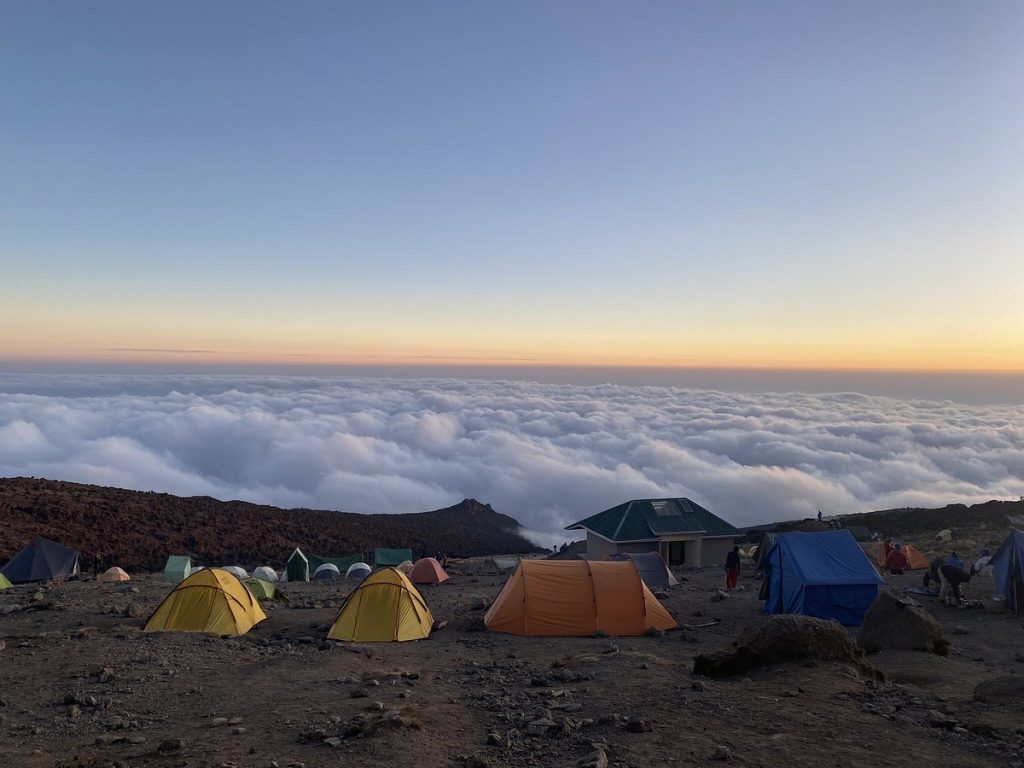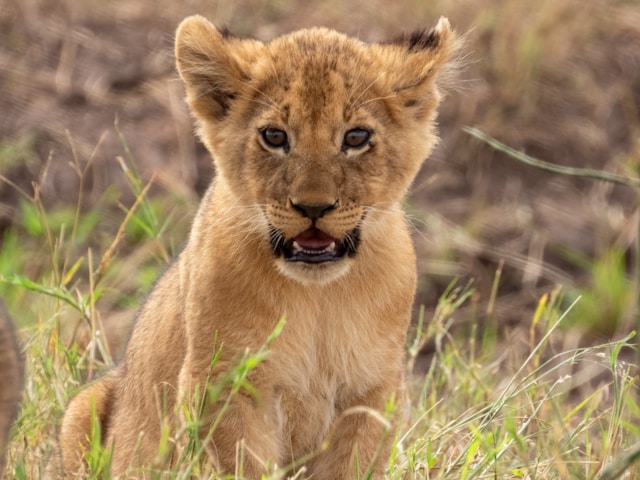On the crater rim, 2,300 meters above sea level, you can look out over the large, fairly smooth crater floor 600 meters further down. The crater’s steep walls do not pose a difficult obstacle for animals that want to get in or out. Wildebeest, zebra, buffalo and elephant sometimes wander out of the crater, but they usually return to the permanent waters and fine pastures of the crater. Lions born in the crater have been found and identified far into the Serengeti.
Animal-rich crater floor
At the bottom of the crater, on the crater floor (caldera), there are many different species of animals, and most of them are quite common here. Probably the animal life here has its densest permanent concentration in the world. Bird life is also richly represented, and more than 350 species have been recorded in Ngorongoro. The animals are easy to spot because the terrain is mostly savannah-like open. In addition, they are used to seeing people in cars so it is relatively easy to get close to them.
Wildebeest usually make up at least half of the animal population, and they have varied in numbers between 8,000 and 15,000. Buffalo began migrating in in the mid-1970s, and a few thousand remain today. Grant gazelles, Thomson gazelles, zebras, warthogs, baboons and several species are common. Elephants do not come down to the crater floor that often, but they like to stay in the forest that surrounds the crater. Actually, giraffes are almost the only animals of the savannah that you don’t meet down here.
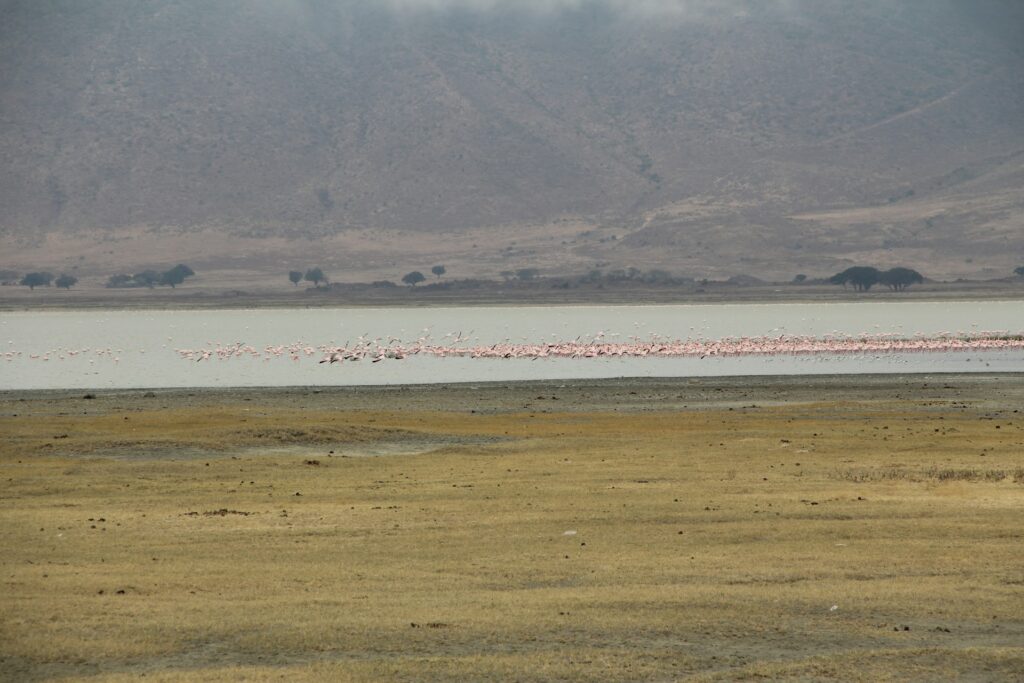
There are species that maintain fairly small but stable populations. Hippos are found adjacent to freshwater areas. Waterbucks, bushbucks and reedbucks are limited by the availability of forest and marshlands. Although coantelopes are savanna specialists, they have always been scarce here. Because there are many prey animals, there are also many predators. Many studies of the ecology and behavior of hyenas, lions and servals have been able to be carried out in the crater, as the animals have long been used to vehicles.
Rhinoceros
The white rhinoceros, the black rhinoceros, is today perhaps Africa’s most endangered animal species. In Ngorongoro, it has declined from 100 specimens in 1965 to perhaps 15 in 2002, which is a direct result of poaching. Now almost everything in human power is being done to protect the remaining rhinos. Ngorongoro is one of the last places in Tanzania where you can now quite safely see rhinoceros. In Tanzania, there are a total of only 50-60 rhinos left.
Lions
Lions usually take their own prey, but when possible they are happy to take over a prey that others have killed. Lions live in packs with related females having cubs with a dominant male. The herd can consist of 10-20 individuals. Currently, there are five main herds, each with a well-defended and defined territory. Females defend it against other females, and males defend it against other males. In 1962, the lions of Stingflies, Stomoxys, were reduced to about 15 individuals. However, the number was soon built up to 60-100 individuals, which has been the norm until 2001. Then another Stomoxys epidemic broke out, and then at least 6 of the population’s barely 70 individuals died.
Resting lions are often swarmed with flies, and they are sensitive to the stings of Stomoxys flies. In particular types of extreme climate change, the Stomoxys population can increase very quickly, which can be detrimental to the lions.
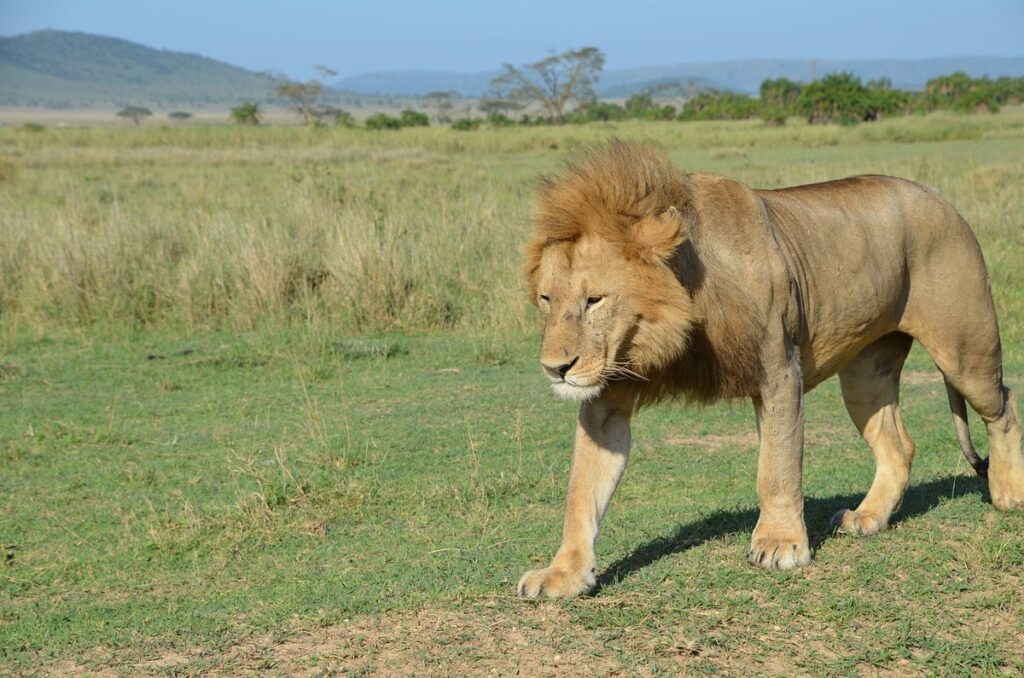
Bodies of water
The soda-rich lake attracts multitudes of birds. Which species visit the lake depends on the mixture of soda and fresh water that currently prevails. Soda lakes belong to a type of salt lakes that form in drainless streams, where evaporation exceeds the supply of water. A soda lake has very high levels of sodium carbonate (soda) and other salts. Cut flamingos in large numbers dominate the visual impression from the lake. The smaller flamingo is found in large numbers, while the larger flamingo is considerably less numerous. The smaller flamingo mainly eats the blue-green algae Spirulina, while the larger flamingo eats various small invertebrates.
Waders like to run along the shore looking for food. We recognize many of them from home, such as Little Sandpipers, Great Sandpipers, and Sandpipers. Others come from southern Europe or Asia, such as mongolian piping plovers, stilt runners and woodpeckers. But there are, of course, purely African species such as e.g. three-banded sandpiper and crocodile guard. Gray-capped gulls, bearded terns and sand terns hover over the water’s surface. Sparrow geese and Nile geese walk or rest along the shore, and cape ducks and hottentot ducks swim on the surface of the water. The grunting of hippos can be heard, but the sound does not come from the soda lake, but from one of the surrounding freshwater swamps.
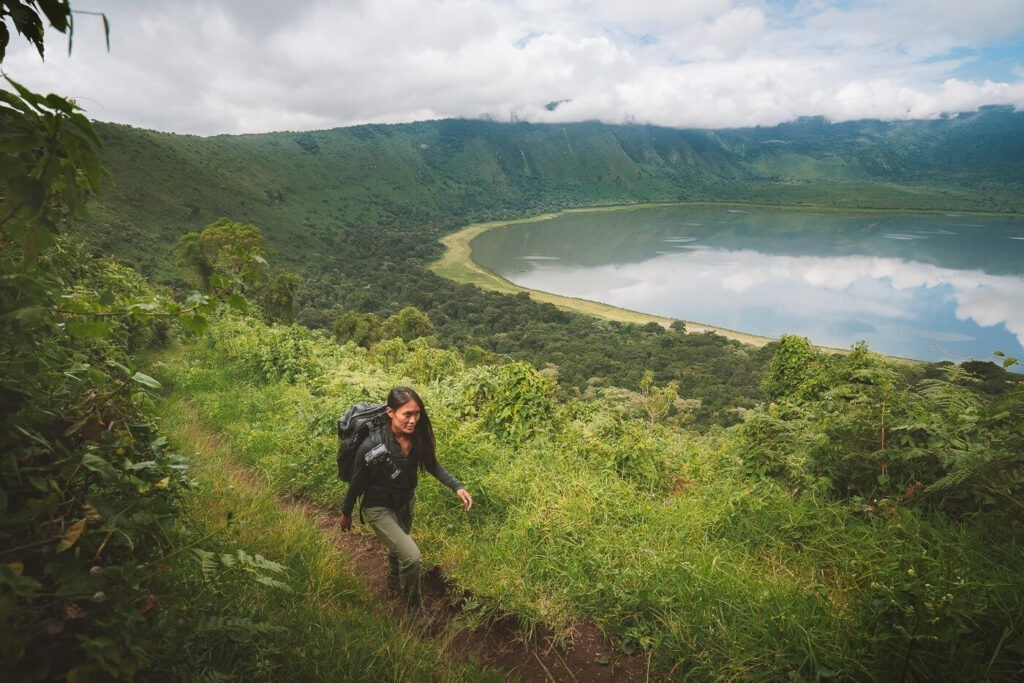
Ngorongoro Conservation Area
The Ngorongoro Crater was once a large volcano that collapsed millions of years ago. The crater itself has an area of 260 square kilometers, and occupies only 3% of the entire Ngorongoro Conservation Area in northern Tanzania. The conservation area borders and transitions in the west to the Serengeti National Park and in the east to the Great Rift Valley. In addition to a diversity of biotopes, which brings an amazing wealth of wildlife, the area contains some of the world’s richest archaeological sites such as Olduvai and Laetoli.
Climate
Ngorongoro’s climate is affected by the season and geography. Although there are two rainy seasons, practically all rain falls between November and May. It can also vary greatly between years. You can usually travel in the area throughout the year, although at times the roads can be very muddy, and thus difficult to access. June and July are the coldest months. Later in the dry season, the air is filled with dust, and sometimes smoke from grass fires, causing poor visibility at long distances. Warm weather returns in October, and when the rains return, visibility becomes clear again.

